| The day after the grizzly-watching trip, I again had plans to take a nature tour out of Telegraph Cove. This time, thankfully, I didn't have to be there until the afternoon, so I slept in and had a late breakfast. When I got outside at Port McNeill, I found a gorgeous sunny day. Here's what it looked like once I drove the short hop over to Telegraph Cove. |
|
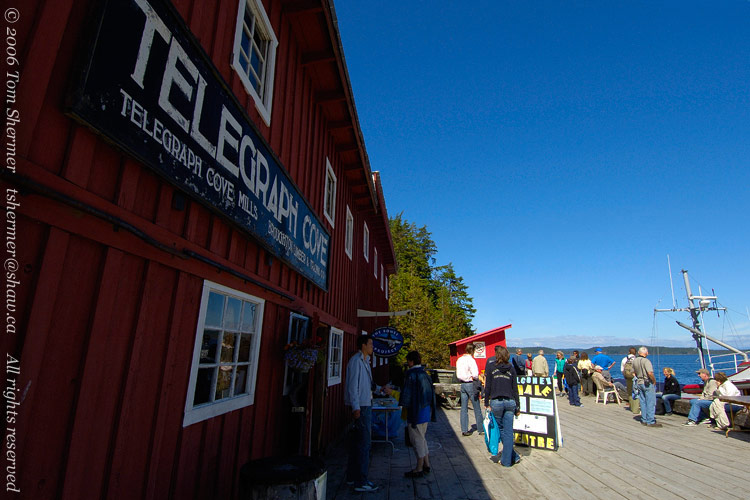 |
| My tour company for the day was Stubbs Island, and the objective of the trip was to find and watch Orcas. |
|
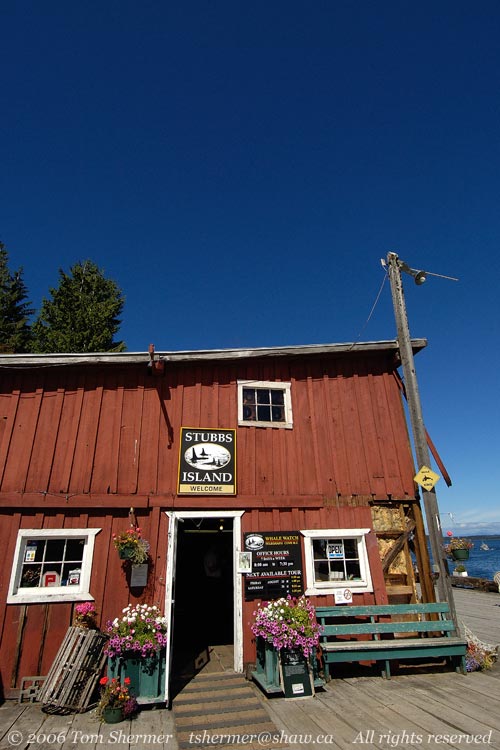 |
Today's plan was more of what one might expect of a trip to the North Island; the area is known for its Orca- and other whale-watching.
Our vessel for the tour was the Gikumi. |
|
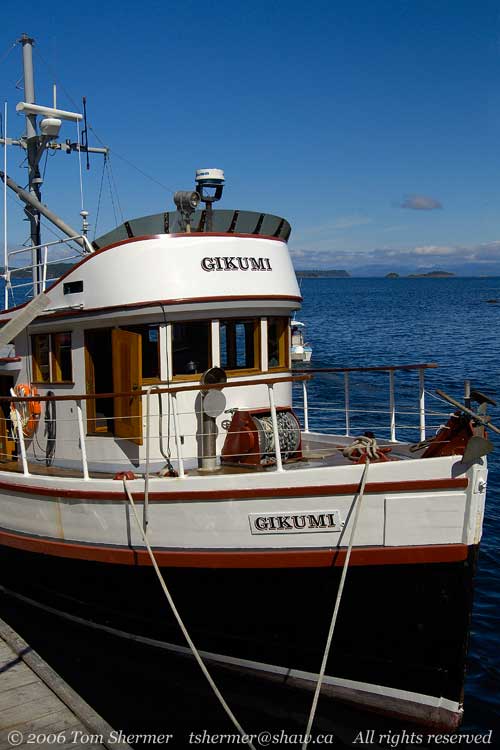 |
We boarded a little after 1:00, had a brief information and orientation meeting, and we were on our way.
We headed vaguely southeast through Robson Bight to Johnstone Straight. Around 2:30 we found an area with eight or ten Orcas in it. The first ones that got close enough for decent photos were a pair of males. |
|
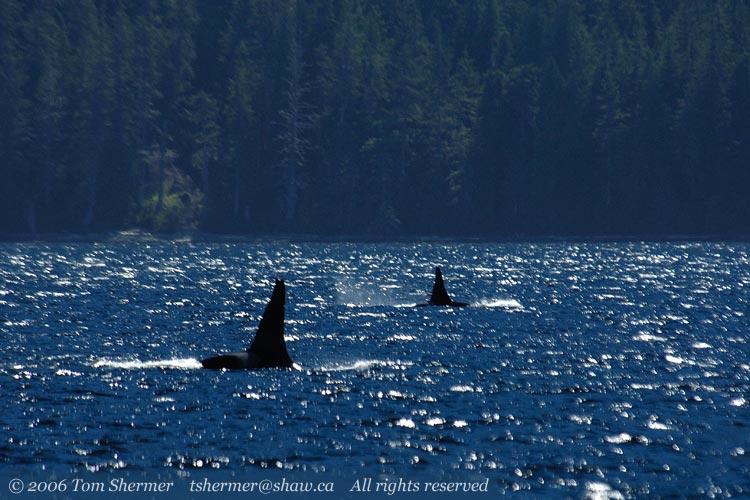 |
| Adult male orcas have the upright, triangular dorsal fin, as above. The women and children have a sloped and curved fin. The next photo shows a juvenile in front with an adult female behind. |
|
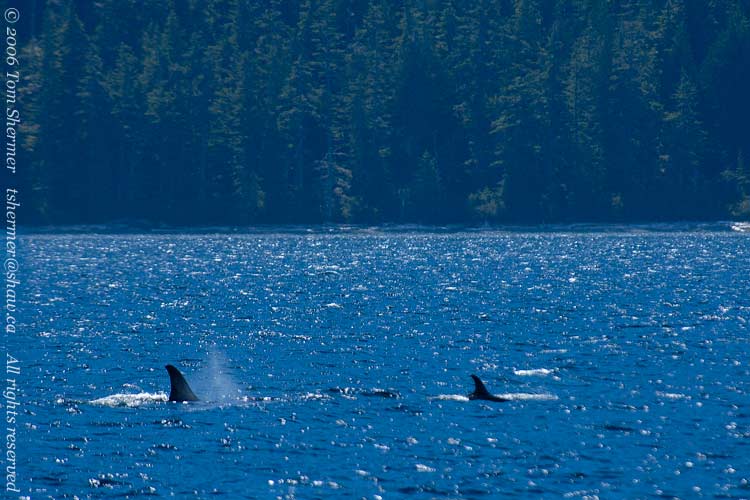 |
| Here's a group of three (two adult females and a juvenile) swimming closely together. These three are undoubtedly related; Orcas associate very closely with family members. |
|
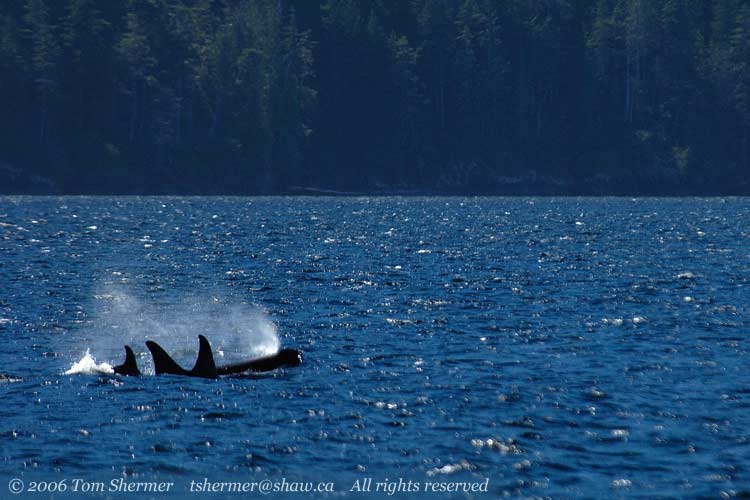 |
| Here I caught the tail of the little one as it dove. |
|
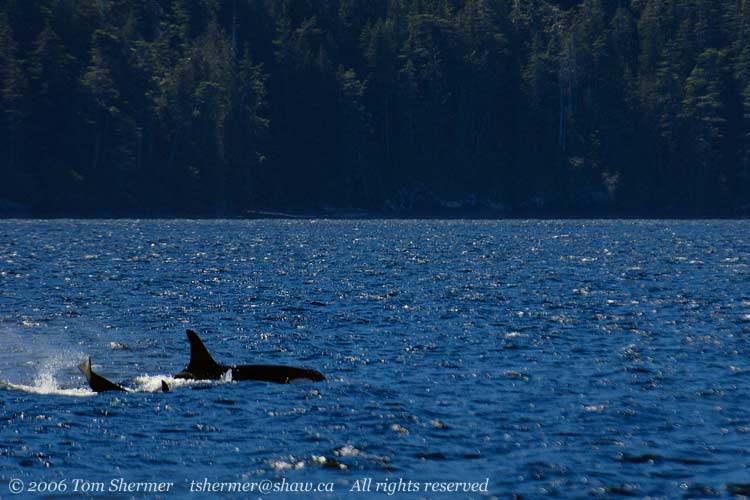 |
Getting good photos was a challenge, because the Orcas would stay down for quite a while before resurfacing, and I never knew how far they would have gone underwater, so I didn't know where to aim the camera. I'm sure that anticipating the times and locations of their resurfacing gets easier with experience, but I wasn't anywhere near experienced enough yet. I missed a lot of stuff, including a breach.
To top it off, my arms were a bit sore from holding up my camera so much on the day before; my camera (particularly when I have the long lens on it, which is most of the time) is a fairly heavy thing to be holding up for hours. So it was a little frustrating to be holding the thing up again for so few good photo-ops.
On the other hand, the water was a marvelous colour, and I did get some okay shots every now and then.
|
|
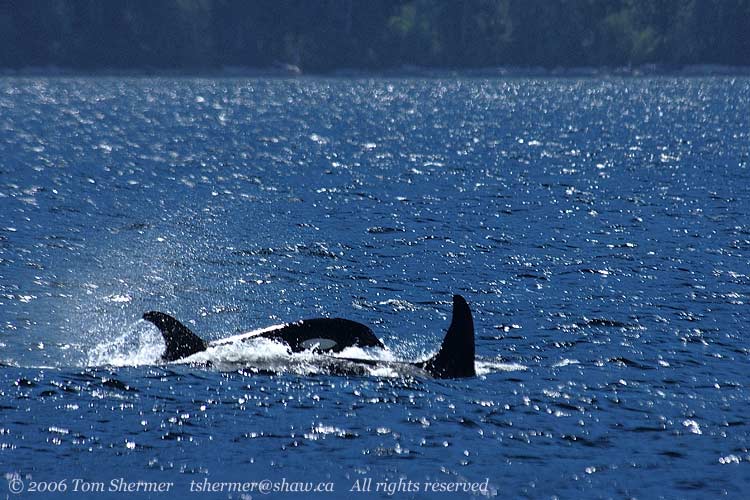 |
| The captain moved the boat around to the other side of a little island, and there we found this male, who passed by our stern. |
|
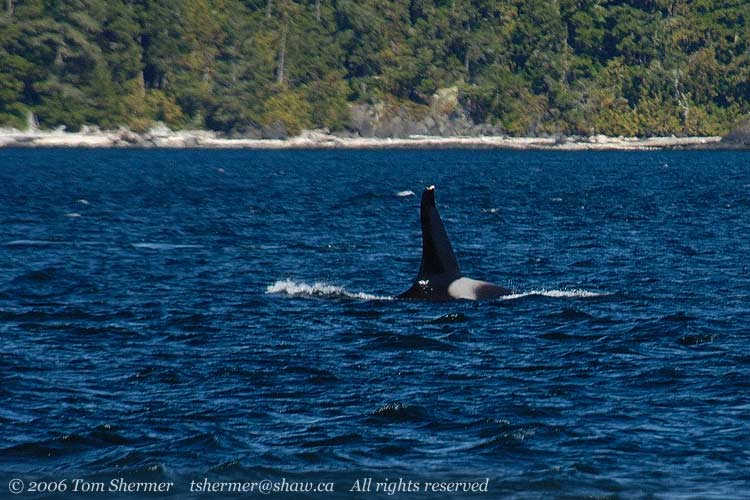 |
It turns out that one can tell orcas apart by the shape and detail of their dorsal fins, so the resident Orcas in the straight have all been cataloged. Because some are quite distinctive, the crew was able to identify several of the animals that we saw by name. Unfortunately, I wasn't taking notes, so I can't relay those names to you.
Here's one last shot from this area. No need to worry, though, it's an Orca, not a shark. |
|
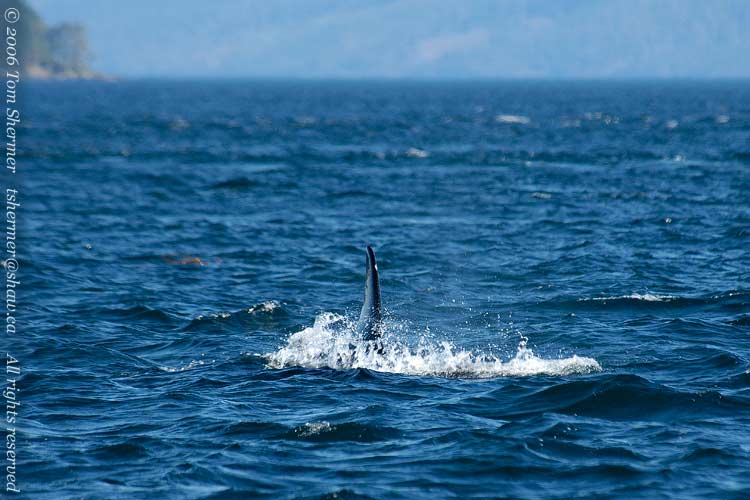 |
And really, if an Orca is coming at you, there's generally little cause for worry. They were called Killer Whales, but that was a bad rap. Yes, they are predators, and will eat seals or other marine mammals, but unless you're being the aggressor, it's not likely that they'll harm you. Rather than as killers, Orcas are better characterized as gentle, highly intelligent, and curious animals with a rich social life. Killing is the occasional thing that they do to eat and survive—unlike many predators, which have predation on their minds 24 hours a day.
At ten after three, we headed back northwest. The trip was uneventful, and all I got were a few shots of passing boats and islands. |
|
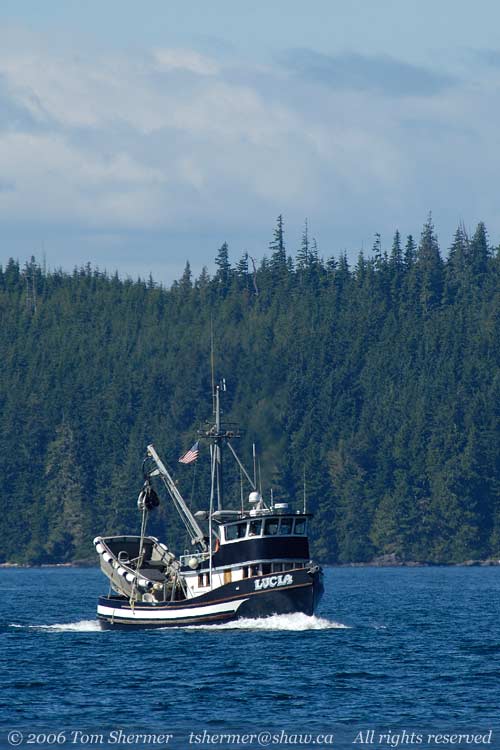 |
I'm not quite sure what the big tub on the back of the Lucia there is used for. It's got marine bumpers all around, so it's obviously meant to float, but it seems an odd shape for a boat...not very hydrodynamic.
Sometime around a quarter to four we got where we were going: an area where a pair of Humpback Whales had been spotted. Sure enough, when we got there, we found the beasts. Here's one of them. |
|
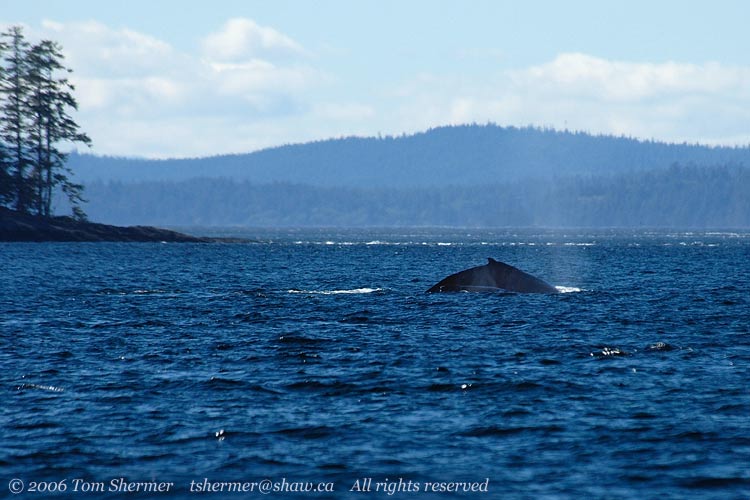 |
| And here's the pair together, headed our way. The little heads in the water in front of them are Rhinocerous Auklets. The Rhinos actually let the whales get quite close before they would fly off. |
|
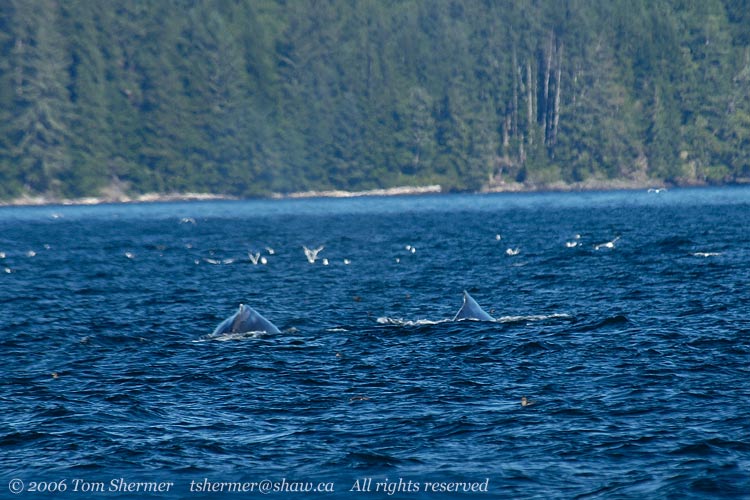 |
| Seeing the Rhinos, I started to think about birds. Looking around the boat, I found a nearby trio of Common Murres. I'd seen my first Common Murres only the day before, but these were much closer, yielding better photos. |
|
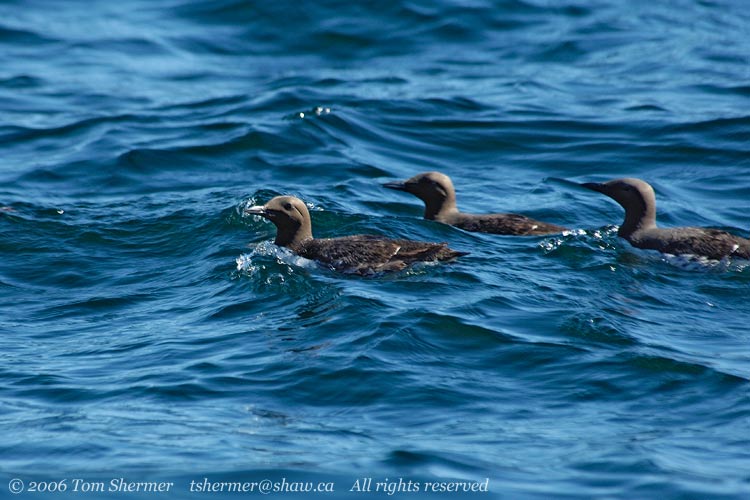 |
I struggled with the bright sunlight and deep shadows, though, and wasn't able to get any details in the shadow areas. At least one of them had his head turned so that the sun lit it up...
I eventually turned my attention back to the Humpbacks. The two were a mother and child; we were told that the child had been hit by a boat a few days before, and it seemed that since then, he hadn't been able to dive. This was sad, but it's also a reality. Some whales have a habit of surfacing far from where they were last seen, unpredictably, perhaps right in front of a boat, and some boat and ship captains have a habit of not keeping a close watch out for animals. I'm not sure which of the two caused this incident. Anyhow, I hope that the tyke healed up and got to carry on.
Here's mom in front, with the "little" guy behind. |
|
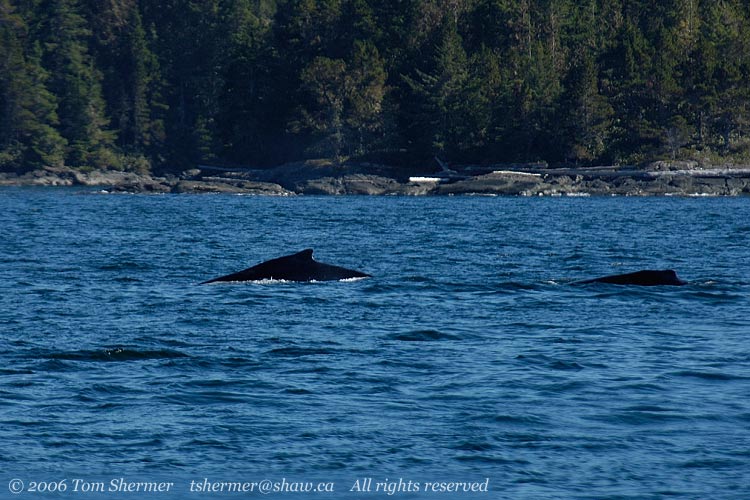 |
| And here are shots of them each individually. |
|
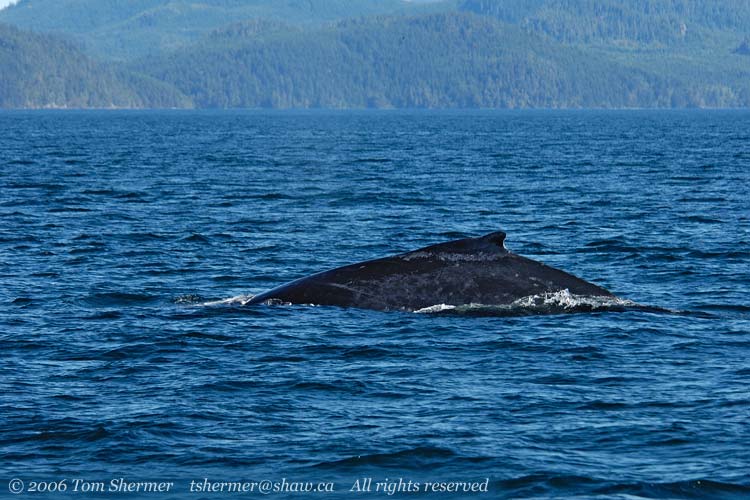 |
| |
|
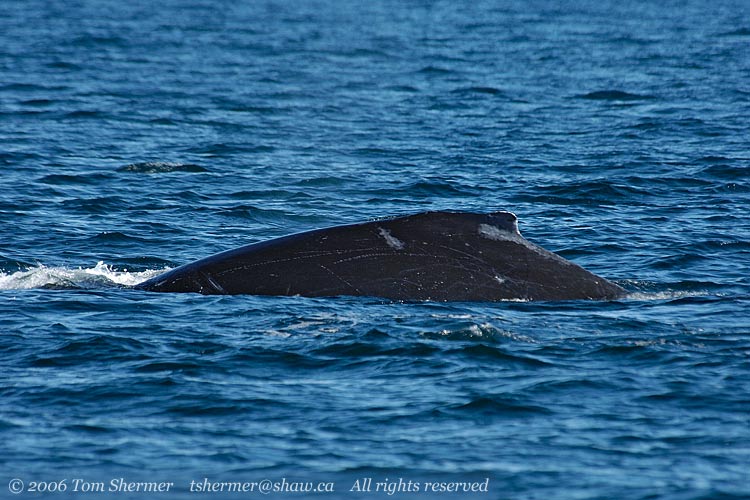 |
A classic type of whale photo (particularly of Humpbacks) are shots of them raising their tail high in the air as they dive. It turns out that these shots can be quite hard to get (particularly in jurisdictions like British Columbia, where you can't run a motor within a certain distance of a large marine mammal). The young Humpback wasn't diving, and the older one wasn't diving much, preferring to stay with the young one. When she did dive, she really didn't raise her tail high. So the situation was not favorable to getting any really good whale-tail shots.
I did manage to get one shot of a half-inclined Humpback tail, though, but it was just a fluke. |
|
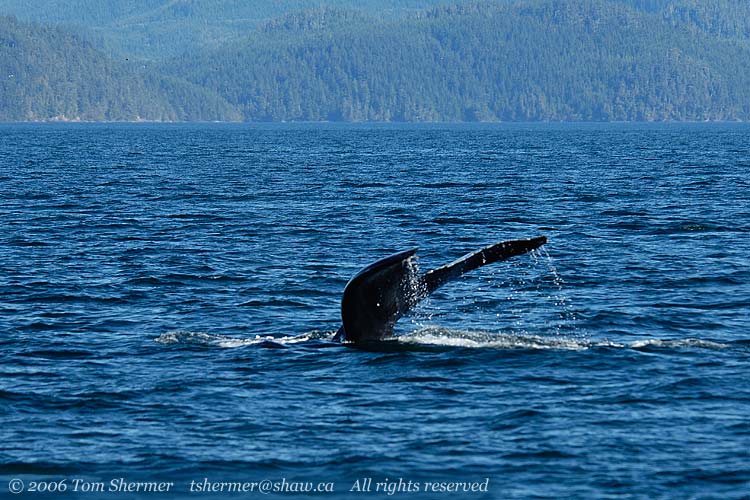 |
| Around the other side of the island from the Humpbacks, we sputtered to a stop near a rock with some basking Harbour Seals. |
|
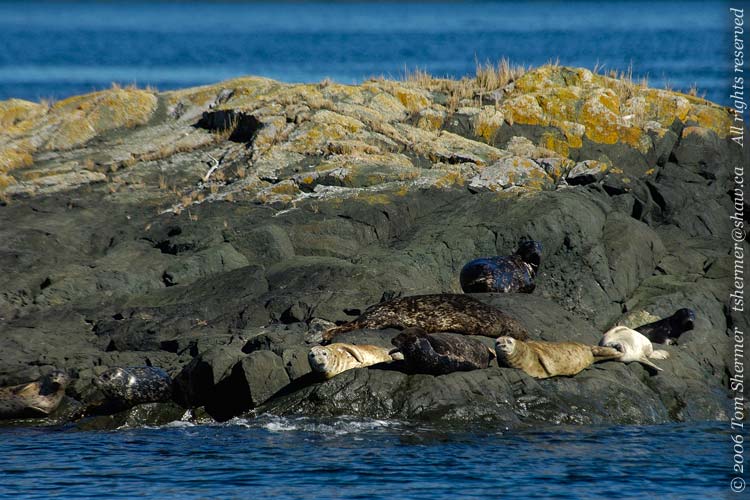 |
| I was quickly enamored of the seals. They and I were obviously kindred spirits, sharing a similar approach to life. The epitome of this approach can be seen in my favorite seal of the bunch, the white guy on the right. |
|
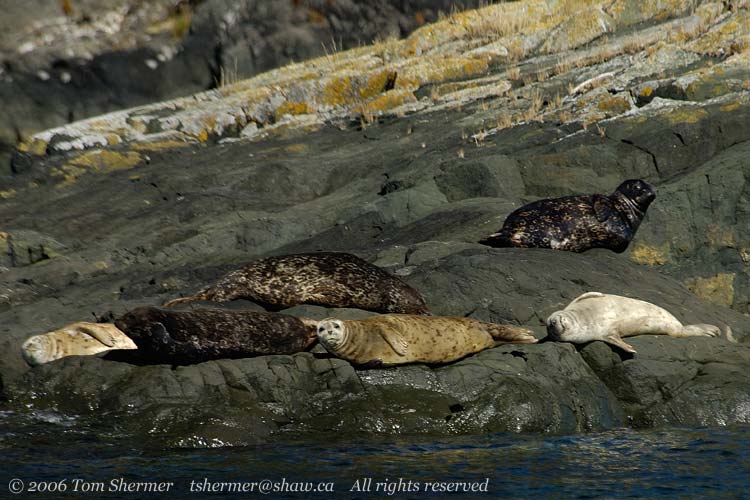 |
Although I must admit that the light-brown fellow in the middle (the one staring at the strange creatures out on the water, looking like he just woke up) also has a special place in my heart.
The crew on the boat proceeded to give a ten- or fifteen-minute presentation on Orcas, their life cycles, behaviours, perils, and conservation efforts. While they were playing some recorded Orca calls, I looked around and found some more Common Murres, these ones even closer than the earlier ones, and in much better light. |
|
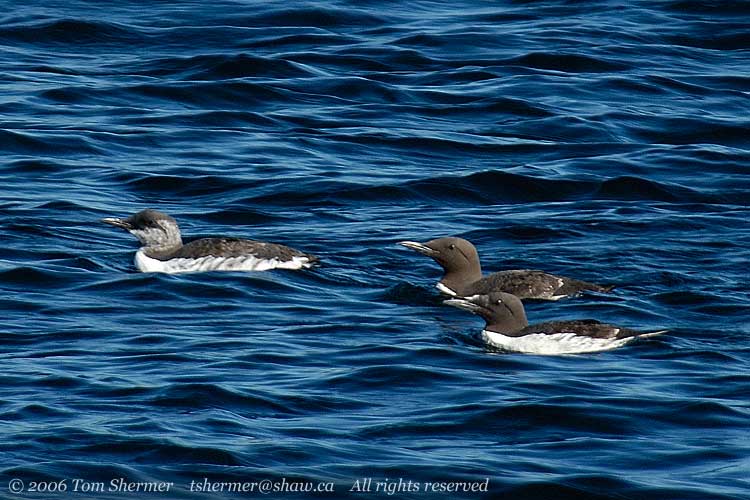 |
The front bird is first-year, and the other two are adults.
After the little talk, we headed back to Telegraph Cove. On the way I caught this landscape. |
|
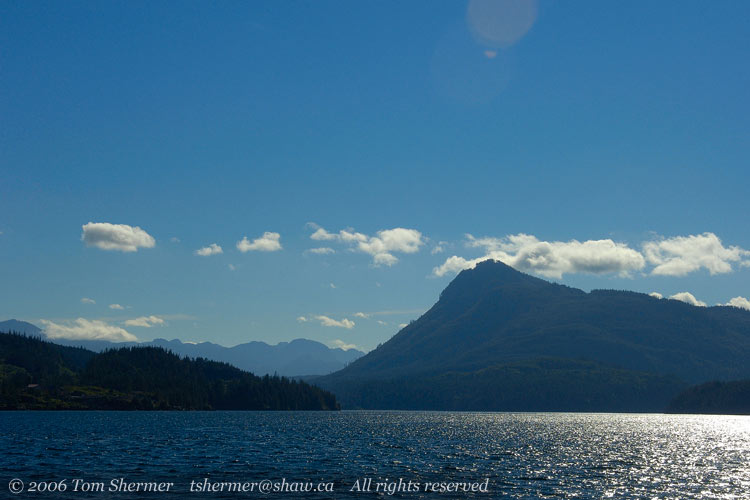 |
| And here's a shot in towards the cove. Interestingly enough, about a minute before I took this photo, we had another Orca swim past us along the shore, headed southeast (left in the photo). |
|
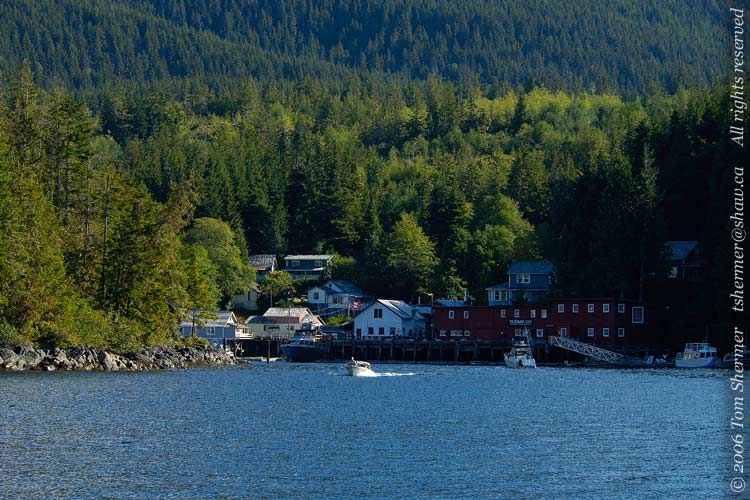 |
| Back at the cove, I took a little time to visit a museum they have there. In the museum, they have several aquatic mammal skeletons, including a big whale hanging from the rafters. It looked like it would make for good photos, so I took a few. |
|
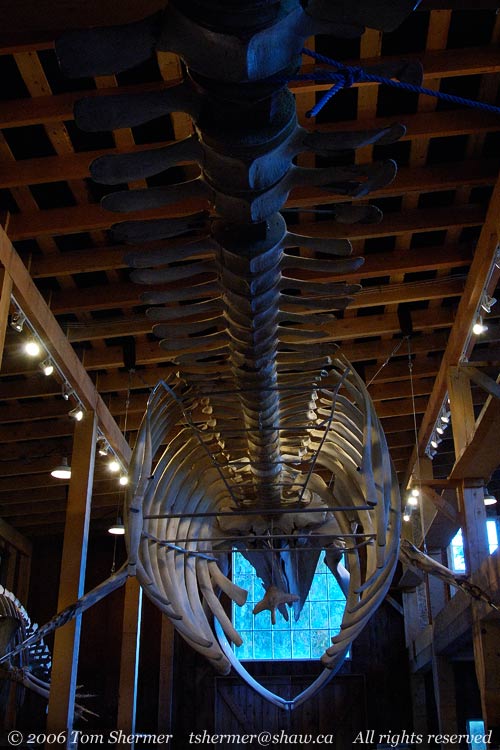 |
|
|
|
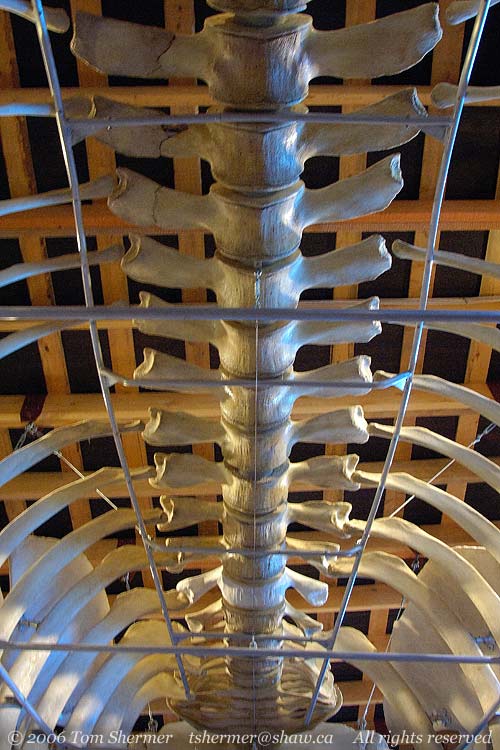 |
|
|
|
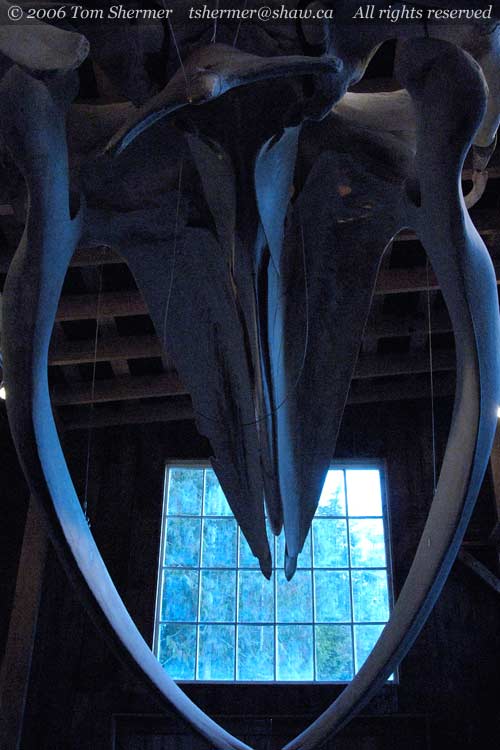 |
|
At this point, it was 5:30, and I drove back to Port McNeill for dinner. After dinner, I went down to the waterfront, where I found a group of people loading something off of a boat at the marina. |
|
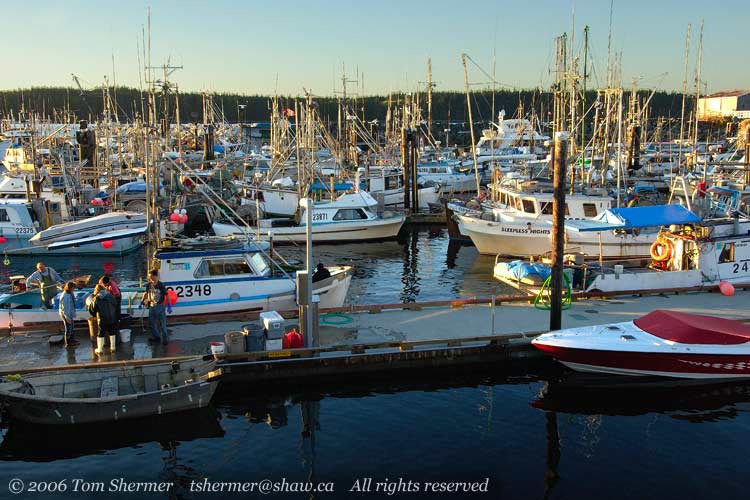 |
|
There was a great jumble of masts reflecting the yellow evening sun, and I took a few vertical shots to try to capture them. |
|
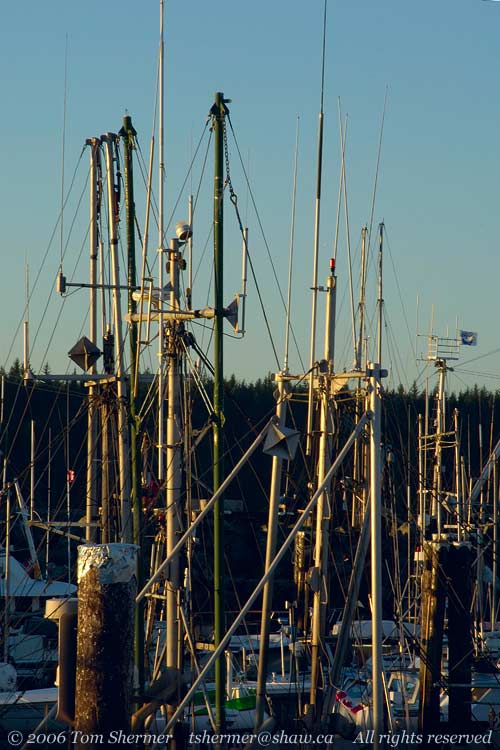 |
| But the people unloading the catch were the most interesting thing around, and I ended up with lots of shots of them, from different vantage points. |
|
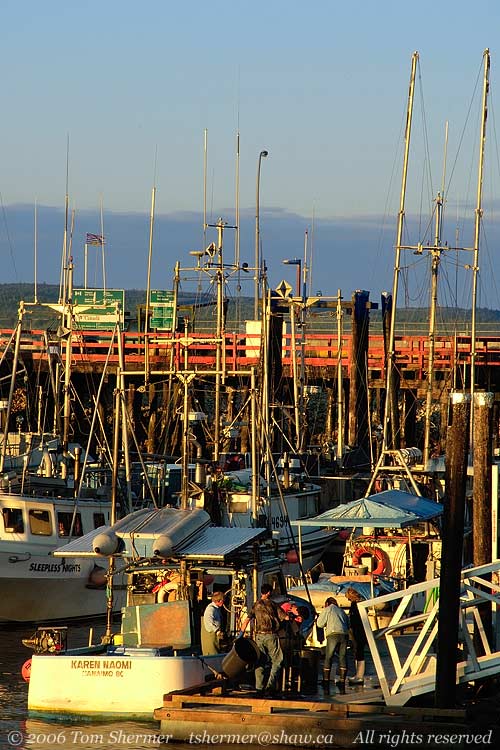 |
|
In these shots, I was attracted mostly by the mix of colors: the red/orange railings, the purple clouds, and the yellow/orange sunlight. |
|
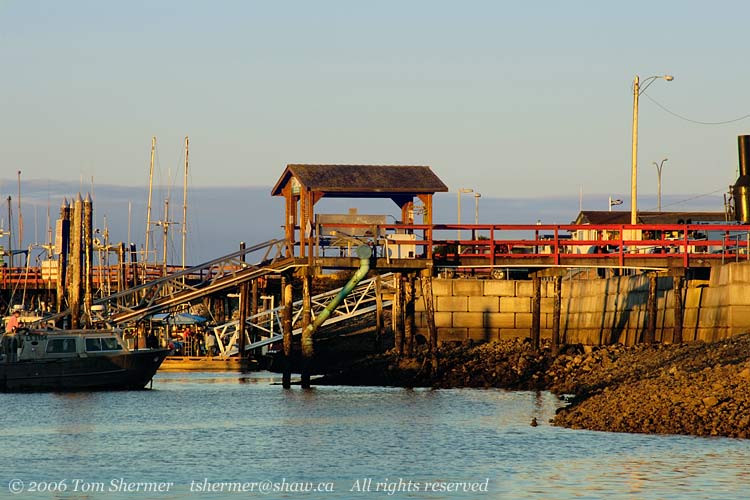 |
|
I walked past all the boats and ferry dock to the other side of the waterfront, which has a beach and a nice view of an island (Malcolm Island, I presume—the one Sointula is on). A tugboat was pulling a raft of logs along the shore, and that made a nice addition to some eastward sunset photos. |
|
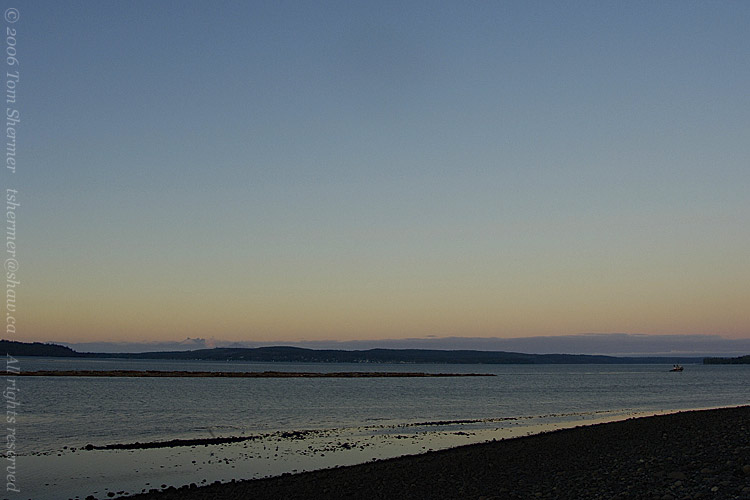 |
|
I took several photos as the tug moved along and the sky and clouds changed color. At this point, I had my general-purpose zoom on my camera, and sometimes had it at 24mm (as above), and sometimes at 120mm (as below). |
|
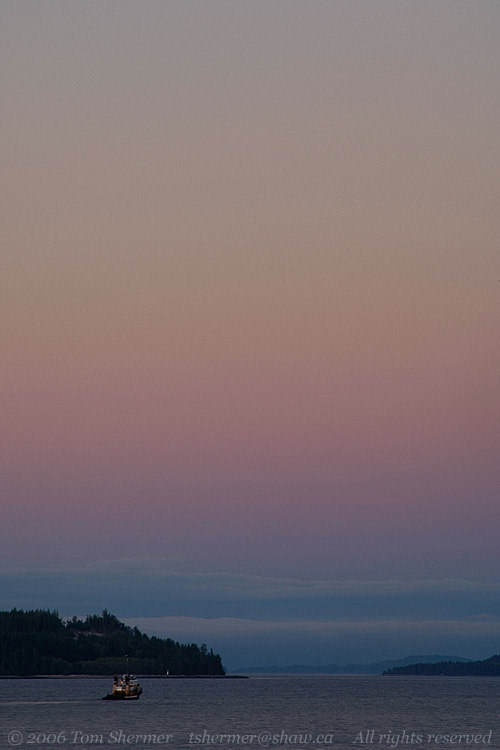 |
|
Here's a final tug-in-the-sunset shot. |
|
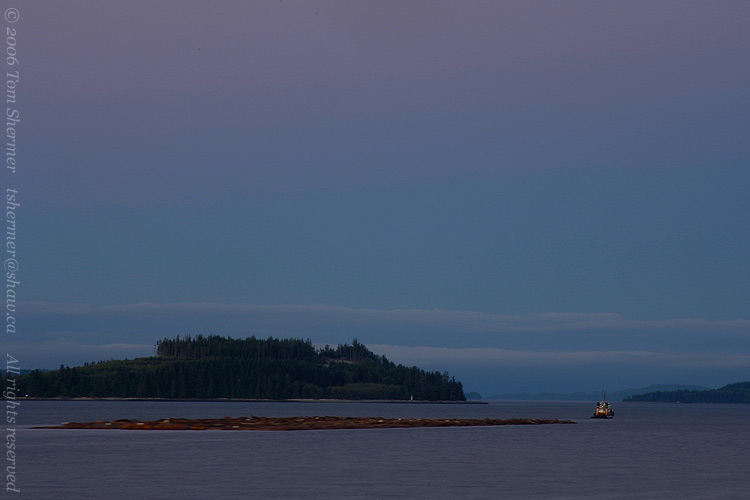 |
|
After that one, it was too dark to get anything decent, so I went back to my motel to survey the day's photos. It hadn't been as exciting a day as the day before, but with Orcas, Humpbacks, Seals, Murres, and a nice sunset, I had no room for complaint.
After two full days being out and about, I was quite tired, so I only had a brief glance through the photos before hitting the sack.
Doing my best seal imitation,
Tom
|
|